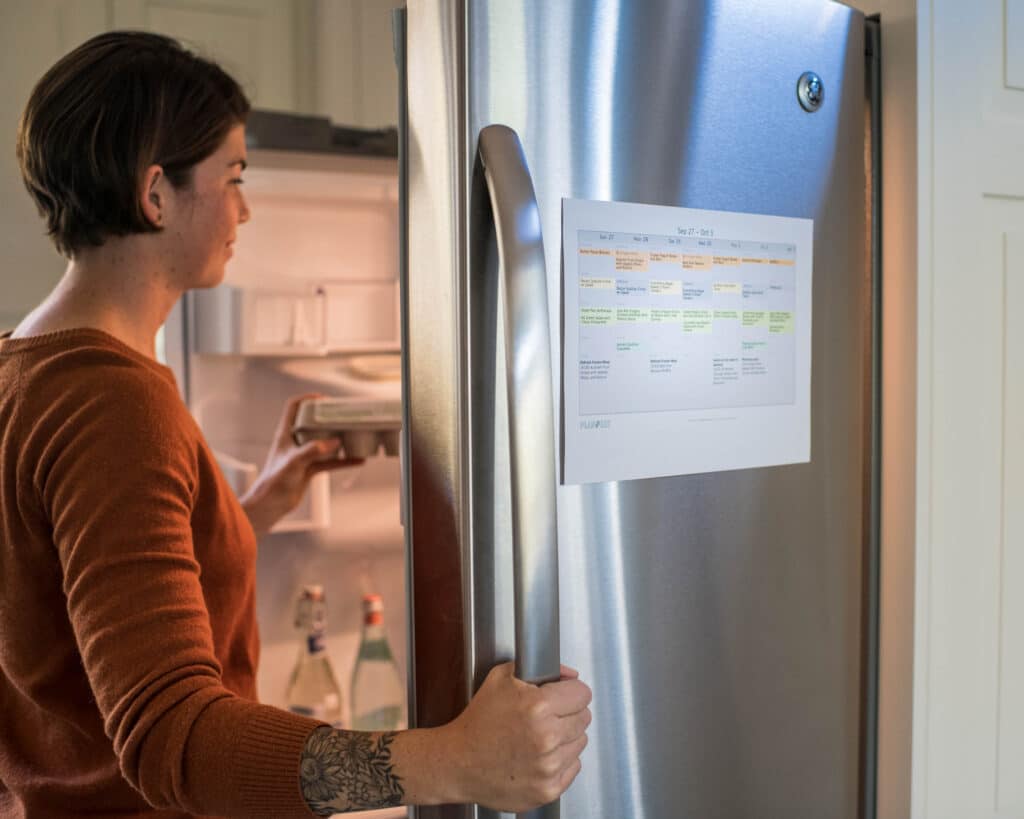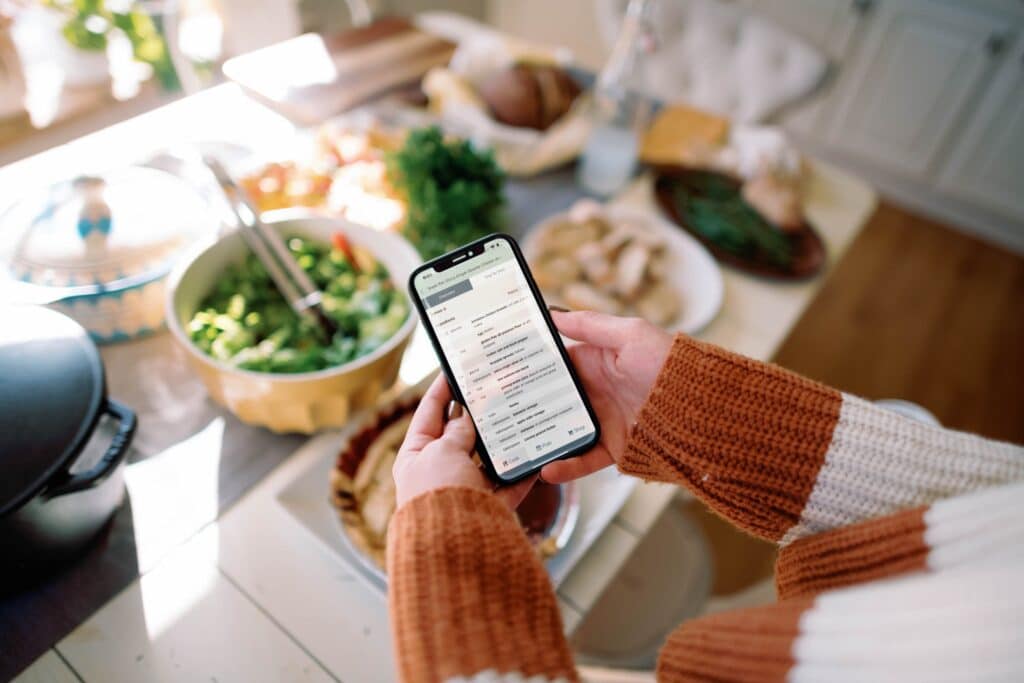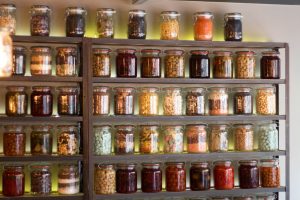While everyone has a different planning style, the most common way to meal plan (and the way we often teach) is to plan around your existing schedule. When you have a lot going on, planning around a busy schedule is necessary because weeknight activities and meetings mean you’re in need of leftovers, 15-minute meals, or crockpot dinners. Even if your schedule isn’t jam-packed, reviewing the week ahead will give shape and structure to your meal planning.
Below are two examples of customers who use Plan to Eat to overcome their busy schedules and create meal plans that work for them.

Cindy:
- Take my calendar through for the week and put my schedule on each day as a note, so I know if I need a quick recipe or not. (Day 1)
- Pick dinner ideas, adding in anything special for the week at the same time (birthday or treats for a class). (Day 1)
- Go through my pantry, freezer, and fridge to double-check my shopping list for what I actually need. (Day 2)
- Place Walmart pickup order (Day 2)
- Pick up Walmart order and shop in-person @ Aldis (Day 3)
I split it up over several days so it isn’t as time-intensive on any one day.
Doing step #1 also helps me note anything special coming up on my calendar that I might need to talk to someone about (nothing to do with meal planning there), or think through more as to how it might impact my time, and therefore meal prep time.
Tammy:
1) Look at the family calendar and put in the “notes” section days where family activities will impact mealtimes (i.e. meetings, church events, working late). For those days, I will be looking for quick recipes, leftover options, a crockpot, or an already-prepared meal I have in the freezer. I also check the weekend schedule to see if bulk cooking is an option to keep already prepared freezer meals in stock.
2) Do an inventory of food in the freezer (already prepared meals and meat I’ve stocked up on when it went on sale), pantry, and frig (what food needs to be eaten quickly so it doesn’t go to waste).
3) At this point, I utilize the “tags” I’ve attached to recipes and begin dropping in meals. I have many food restrictions so tags help me wean out meals I saved a recipe for but can no longer eat. I plan for 2 weeks at a time. I try to incorporate a variety (i.e. Mexican, Asian, chicken, beef, vegetarian, soup, a new recipe) into each week. Quicker meals get added for weekdays and more time-consuming or bulk cooking on the weekends.
4) Once the main entrée is chosen for each day of the 2 week period, I go back and add side dishes for most of the days leaving a few days open to eat leftover veggies in the frig or veggies we’ve picked from the garden that need to be eaten.
5) Now for the grocery list…I customize the dates to include ingredients needed for this 2-week menu. I delete items I already have and make sure other items are correctly assigned to the store where I typically purchase them.
Finally, I add additional items that are not meal-specific. I have not been utilizing the Staples feature, but I plan to add that to my routine this month for the items we typically keep on hand.
One of the features I love about Plan To Eat is the ability to move meals around when expected changes occur in our schedule which requires us to change up the plan due to time constraints.
Both of these customers mention thinking of special occasions like bringing treats to class for a birthday and looking to see when bulk prep and cooking is possible. These are two huge benefits of creating a meal plan around your schedule since 1) nothing is going to sneak up on you and 2) you can plan time to get ahead of the week’s cooking.

How Plan to Eat Can Help
I have six game-changing features to help you plan around your schedule:
- The recipes in your Plan to Eat account are all imported by you, so you get to import the recipes that make sense for your family and schedule. You can import a bunch of 30-minute or less recipes to plan on busy nights or all your family favorites, so cooking is on auto-pilot.
- You can add tags and custom categories to your recipes, so you can find them quickly for planning. You can add tags like “quick and easy” or “weeknight dinner” and then search for those recipes when you meal plan.
- You can filter your recipes by cook time. If your imported recipes come with an estimated cooking time, or you’ve added the time yourself, you can find recipes based on the total cooking time.
- You can create Menus and then reuse those meal plans for tried and tested busy weeknight meals. Creating Menus can turn your weekly meal planning into a 2-minute task!
- When you have a bit of free time, batch-cook a few meals or recipe components and freeze them for nights when you don’t have time to cook. You can log and keep track of your frozen meals with the Freezer feature in Plan to Eat.
- Last, but not least you can add notes to your Planner to remind you of events and activities while you’re creating your meal plan. Some customers use their Plan to Eat calendar as their main calendar to remember what they have going on!
Meal planning around your schedule gives you time to assess your schedule and incorporate meals that work for you and your family, so you’re organized and prepared for the week ahead!
If you’d like to try these features of Plan to Eat for your meal planning, start a free trial now.
Quick Recipe Resources:
Looking for a few new quick recipes to add to your weeknight meal plans? Check out these recipes from the Plan to Eat blog:






